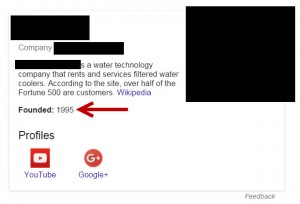SEO is in a dynamic phase right now, thanks in part to the evolution of Google’s ranking algorithms and in part to the move to optimize visual, voice, and Facebook Search channels. If you are a webmaster or a business owner (or both), now would be a good time to re-evaluate your SEO practices with an eye toward bringing them up to date. Here are a few areas to consider:
-
Beneficial Purpose:
Google now places a heavy emphasis on the beneficial purpose of a website during the ranking process. Pages should be user-centered to achieve their intended purposes. This includes sharing topical, personal, or social information, sharing various forms of media, expressing opinions, entertaining visitors, selling services and products, running a forum, and facilitating user interactions. Pages that seek to make money without helping users are now considered to be of low quality.
-
YMYL Content:
YMYL stands for “your money or your life.” Broadly, this is critical information that your website must get right. Specifically, inaccurate or deceptive YMYL content might affect a reader’s financial stability, safety, health, or happiness. Google now places greater scrutiny on the truthfulness of YMYL pages, including ones that cover news, legal issues, governmental developments, financial and medical advice, shopping information, and information on groups of people.
-
EAT Factors:
EAT, or “expertise, authoritativeness, and trustworthiness,” was once the entire basis of page quality, but now is one of several factors. YMYL content must meet a higher EAT standard, demonstrating the credentials of experts and generally recognized authorities that are considered honest and accurate. EAT factors are of the highest importance on pages containing medical, scientific, financial, legal, and other information that supports decisions.
-
Scaled Content:
Important, high-quality information should be shared in a coordinated way, including long-form articles, press releases, videos, podcasts, multiple platforms, chatbots, and Google Actions. The trend is to develop original, expert content and then distributing it through multiple channels and media.
-
Avoiding Staleness:
You can help your ranking by updating old content, something that Google notices. For many websites, that means updating or archiving pages that are six months to two years old. Google will downgrade a page that loses relevance because the information is dated. You should update your content to include the latest links, statistics, and external resources. Also, you should regularly audit your pages for duplicate, conflicting, or sketchy content. There are audit tools (e.g., DeepCrawl, SreamingFrog, SEMRush, etc.) available to help you identify problem areas.
-
Facebook Search:
Paid social and paid search are increasingly intertwined. Is your Facebook search-ad strategy up to date? All brands can now place Facebook ads that automatically receive Automatic Placement support. That means your ads will appear in the Facebook Marketplace as well as primary search results. Your strategy should include using niche keywords targeting less saturated audiences.
-
Sharpening Backlinks:
Backlinking continues to be an important tactic to boost the credibility of websites. Your backlinks should target competitive keywords, especially in highly-competitive markets. These should be quality backlinks that promote specific marketing outlets, such as digital marketing platforms that serve similar audiences with high domain authority. By the way, these same considerations also apply to guest postings, encouraging long-term recurring contributions.
-
Schema Use:
The joint facility Schema.org provides websites with a structured data markups that major search engines interpret page information. You need Schema to provide snippets that serve as zero-click results on the search results page, a good strategy to keep searchers from traveling to another site to answer a question. Also, Schema supports voice-based queries such as those available through Google Assistant.
Conclusion
We’ve given you eight tips to help you improve your SEO practices in the new decade. Space limitations prevent us from exploring additional tips that you should check out on your own, including Accelerated Mobile Pages, page speed, Google Search Console, different language hreflang tags, and more. So saddle up, cowpokes, and git that SEO done – don’t let your competitors get the jump on you.
Digital & Social Articles on Business 2 Community
(19)
Report Post






